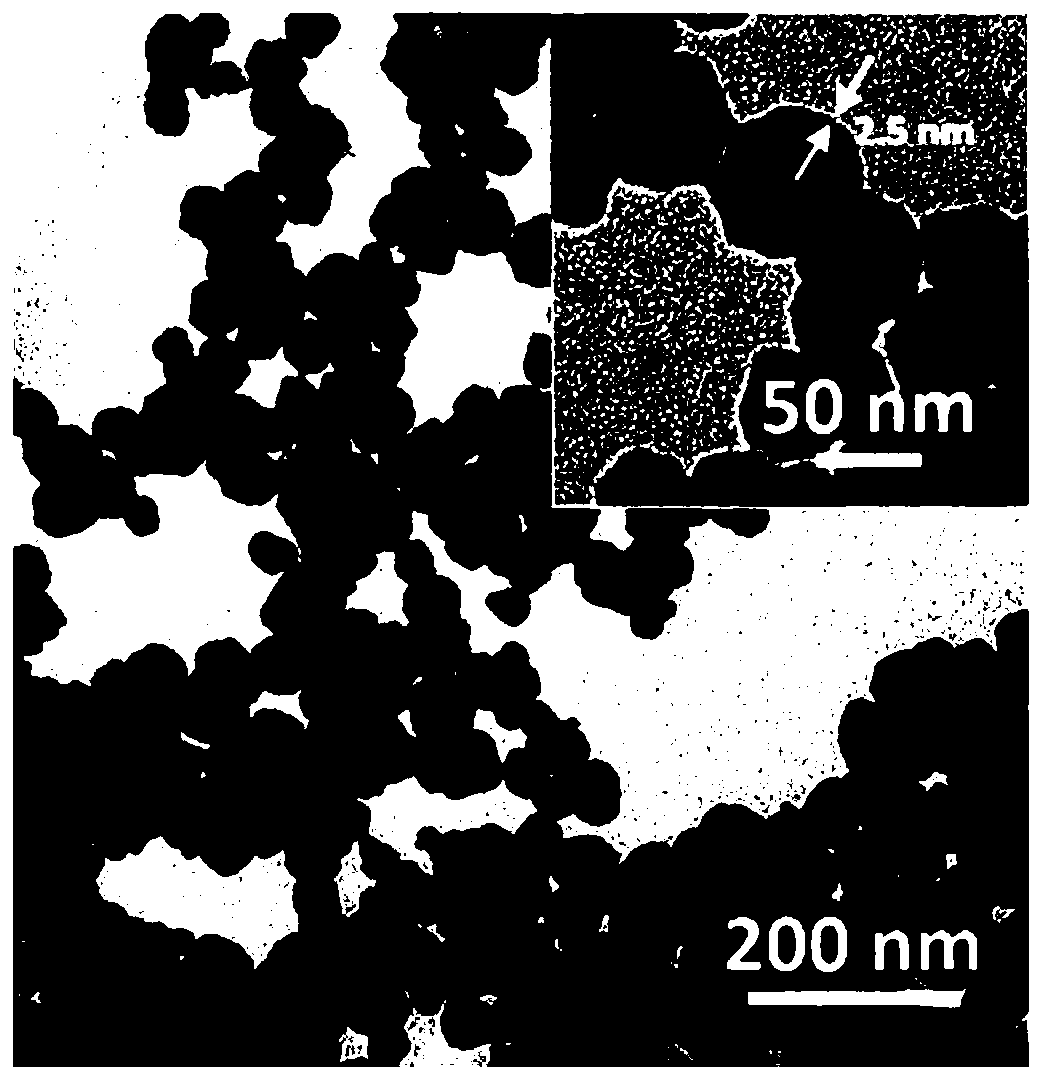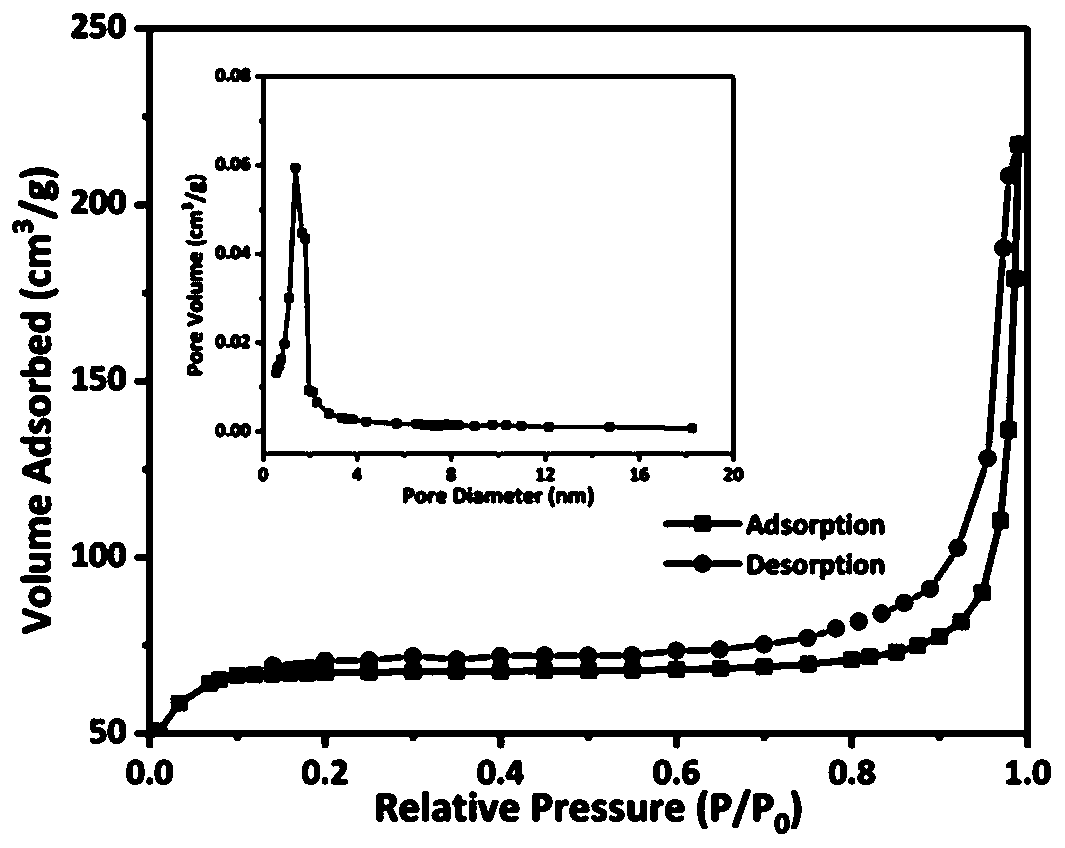Porous cuprous oxide nano crystals, and preparation method and application thereof
A technology of cuprous oxide and nanocrystals, applied in the field of anti-tumor nanomaterials, achieving the effects of low cytotoxicity, low price, and simple preparation methods
- Summary
- Abstract
- Description
- Claims
- Application Information
AI Technical Summary
Problems solved by technology
Method used
Image
Examples
Embodiment 1
[0021] Preparation of porous cuprous oxide nanocrystals: 5 g of polyethylene glycol (molecular weight: 10 000 kDa) was ultrasonically dissolved in 100 mL of 10 mM copper acetate monohydrate aqueous solution. 6 M sodium hydroxide aqueous solution (0.5 mL) was added at a rate of 8.0 μL / s, followed by reaction at room temperature (25 °C) for 30 min. After the reaction, 1 M ascorbic acid aqueous solution (2 mL) was added at a rate of 6.5 μL / s, and the mixture was continued to react for 30 min under nitrogen protection after the addition. Subsequently, the mixture was centrifuged and washed three times with deionized water and ethanol, respectively. The centrifuged solid was dried in a vacuum oven for 24 h and stored under nitrogen.
[0022] The transmission electron microscope image of the porous cuprous oxide nanocrystals prepared by this method is as follows: figure 1 , it can be seen from the transmission electron microscope that the prepared porous cuprous oxide nanocrystals...
Embodiment 2
[0024] Application of porous cuprous oxide nanocrystals in inhibiting tumor cells: Tumor cells, human lung cancer cells A549 or normal cells, mouse fibroblast L929 cells were seeded in 96-well plates and incubated at 37 °C, 5% CO 2 Incubate overnight in the incubator. Subsequently, the medium was replaced with a suspension containing different concentrations of cuprous oxide nanocrystals, and the culture was continued for 24 h. Next, the cell viability was detected by the MTT (thiazolium) method.
[0025] From Figure 4 and Figure 5 It can be seen that the prepared porous cuprous oxide nanocrystals have obvious killing effect on tumor cells, IC 50 It was 36.34 μg / mL. It is less toxic to normal cells. This may be due to the weak acidic microenvironment of tumor cells has a strong degradation effect on cuprous oxide nanocrystals, while the neutral environment of normal cells degrades polyethylene glycol-protected cuprous oxide nanocrystals very slowly.
PUM
| Property | Measurement | Unit |
|---|---|---|
| molecular weight | aaaaa | aaaaa |
| size | aaaaa | aaaaa |
| particle size | aaaaa | aaaaa |
Abstract
Description
Claims
Application Information
 Login to View More
Login to View More - R&D
- Intellectual Property
- Life Sciences
- Materials
- Tech Scout
- Unparalleled Data Quality
- Higher Quality Content
- 60% Fewer Hallucinations
Browse by: Latest US Patents, China's latest patents, Technical Efficacy Thesaurus, Application Domain, Technology Topic, Popular Technical Reports.
© 2025 PatSnap. All rights reserved.Legal|Privacy policy|Modern Slavery Act Transparency Statement|Sitemap|About US| Contact US: help@patsnap.com



